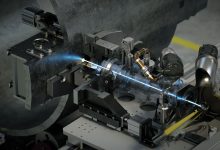Siemens strengthens its digital leadership and plans future with Vision 2020+
Siemens has recently signed an agreement to acquire mendix, a pioneer and leader in cloud native low code application development. Under the agreement, Siemens will pay in cash EUR 0.6 billion to acquire the company. Mendix will retain its distinct brand, culture and continue serving customers across the full range of industries with its unique platform and broad ecosystem and community. Siemens will continue to invest in mendix’s independent product roadmap, continuing its legacy as the most-innovative, open low-code cloud platform. Mendix will be part of the software business of Siemens’ Digital Factory (DF) Division, with the mendix platform also deployed across other Divisions.
As enterprises invest to digitalize their operations, demand for business applications is growing significantly faster than the capacity of IT organizations to deliver them. Low code application development platforms provide features for rapid development, deployment and execution of applications in the cloud.
“We acquire mendix to extend our leading position in digitalizing the industrial world, which is a cornerstone of our Vision 2020+”, said Klaus Helmrich, member of the Managing Board of Siemens AG. “Mendix is a leader in the rapidly expanding low-code segment and their platform will help our customers to adopt MindSphere even faster by accelerating cloud-based application development for the Industrial Internet of Things (IIoT)”, he added.

“As part of our digitalization strategy, Siemens continues to invest in software offerings for the Digital Enterprise. With the acquisition of mendix, Siemens continues to add to its comprehensive Digital Enterprise and MindSphere IoT portfolio, with cloud domain expertise, cloud agnostic platform solutions and highly skilled people,” said Jan Mrosik, CEO of the Digital Factory Division.
“When we pioneered the low-code market over a decade ago, we had a bold vision to help customers change the way they build software, but we never imagined the oceanic opportunity that’s now in front of us,” Derek Roos, co-founder and CEO of mendix, pointed out. “I’m thrilled to accelerate our vision at a much larger scale with the incredible team, assets, industry know-how and footprint of Siemens behind us. Being part of Siemens will allow us to serve our customers even better by accelerating our R&D vision, adding a much larger pool of go-to-market resources, and leveraging an enormous global infrastructure. And we’ll do this while maintaining our unique culture, brand and R&D capability that has allowed us to become the leader in our space – I can’t think of a better outcome for our customers, community, partners and team.”
Closing of the transaction is subject to customary conditions and is expected in the first quarter of fiscal year 2019. Siemens expects to achieve synergies through a combination of revenue growth and anticipated margin expansion, representing a net present value of more than EUR 0.5 billion. Additionally, the transaction is expected to be EPS accretive within four years from closing. Derek Roos will remain CEO of the company and join the Siemens PLM Software senior leadership team.
Setting the course for long-term value creation
Siemens is setting the course for long-term value creation through accelerated growth and stronger profitability with a simplified and leaner company structure. The main aim of the Vision 2020+ company strategy is to give Siemens’ individual businesses significantly more entrepreneurial freedom under the strong Siemens brand in order to sharpen their focus on their respective markets. Plans also call for strengthening the company’s growth portfolio through investments in new growth fields such as IoT integration services, distributed energy management and infrastructure solutions for electric mobility. The concentrated expansion of industrial digitalization, in which Siemens is already the world leader, will make a further contribution. As a result, both the annual revenue growth rate and the profit margin of the company’s Industrial Business are expected to increase by two percentage points over the medium term. Basic earnings per share are expected to grow faster than revenue over the medium term.
The Vision 2020 strategy program, which Siemens launched in 2014, has been largely completed – faster and more successfully than planned. “We’ve worked very hard over the past four years. Today, nearly all our businesses are significantly more profitable, customer satisfaction is at a record high, and our Digital Factory is the market leader in industrial digitalization,” said Joe Kaeser, President and CEO of Siemens AG.
“The Supervisory Board supports the company’s further strategic development and is convinced that Vision 2020+ is an outstanding plan for accelerating the transformation and strengthening Siemens for the next decade from a position of strength,” said Siemens Supervisory Board Chairman Jim Hagemann Snabe.
According to Kaeser, companies often avoid making necessary changes until they run into obvious difficulties. “It would be irresponsible to rest on our laurels now,” he stated. “The speed and power of global changes are increasing, and it’s our obligation to anticipate them. We’re convinced that this is the right time to sustainably shape our future.” For Siemens’ President and CEO, digitalization, often called the Fourth Industrial Revolution, is the largest transformation in the history of industry.
“It won’t be the biggest companies that survive, but the most adaptable. That’s why we’ll further deepen the understanding of our Ownership Culture and give our businesses considerably more entrepreneurial responsibility than before. This also includes the direct assignment of business-related functions,” stated Kaeser. In addition, the company’s markets are experiencing major paradigm shifts caused by megatrends such as electric mobility and distributed energy systems. Siemens intends to utilize and actively shape these changes.
Kaeser is convinced that Vision 2020+ will unite the interests of all stakeholders: “We’ll be even faster and more expert in supporting and advising our customers in achieving their goals – and not just in digitalization. For our employees, the Siemens of the next generation means greater personal and creative freedom and more opportunities to take responsibility. Our investors will also profit because we’ll give our businesses all the tools they need to be the best in their particular market environments. And an even stronger Siemens will be in a better position to meet its social responsibilities,” he added.
New structure: More entrepreneurial freedom – less centralized governance
The goal of the new company structure is to provide Siemens’ individual businesses with greater entrepreneurial freedom. As a result, the organizational level of the current Divisions will be eliminated, the regional organization realigned to further increase its customer orientation, and company headquarters streamlined. “By further developing our strategy, we’re building the next-generation Siemens. Less management from headquarters and more freedom for our businesses will make us stronger and more flexible,” underlined Kaeser.
Below the Group level, there will be three Operating Companies and three Strategic Companies. The realignment will enable Siemens to sharpen its customer focus and orient its activities on the requirements of the industries in which it operates. “The days when project business, product, software and service companies, with all their different requirements, could be centrally and efficiently managed are over,” concluded Siemens’ President and CEO.
The new structure will go into effect at the start of the new fiscal year on October 1, 2018. Implementation will proceed step-by-step and is to be completed by March 31, 2019. The company’s Building Technologies Division (BT), Energy Management Division (EM), Power and Gas Division (PG), Digital Factory Division (DF) and large parts of its Process Industries and Drives Division (PD) will be combined to form three new Operating Companies. The Business Units of the company will also be set up newly in a more focused manner and integrated into the three Operating Companies.
About Mendix
Mendix was founded in 2005 in Rotterdam, Netherlands and is headquartered in Boston, Massachusetts. The company has over 400 employees and its software-as-a-service business model results in over 90 percent of sales being recurring. Siemens expects mendix to continue to experience strong growth in the future in both its existing customer segments and across the Siemens customer base. Mendix will accelerate Siemens’ current cloud, IoT and Digital Enterprise software capabilities. Mendix will also continue to deploy its technology to customers and partners across all verticals and technology ecosystem.
Mendix was named a leader in the Gartner ‘2018 Magic Quadrant for Enterprise High Productivity Application Platform as a Service’, placing furthest for completeness of vision for the second consecutive year, and a leader in the Gartner ‘2018 Magic Quadrant for Mobile App Development Platforms’ for the second consecutive year.
Mendix is the fastest and easiest platform to build and continuously improve mobile and web applications at scale. The only low-code platform available through SAP and IBM, the company helps the customers digitize their operations by building, managing, and improving apps at unprecedented speed and scale. More than 4,000 forward-thinking enterprises, including KLM, Philips and Royal DSM use its platform to build business applications to delight their customers and improve operational efficiency.







